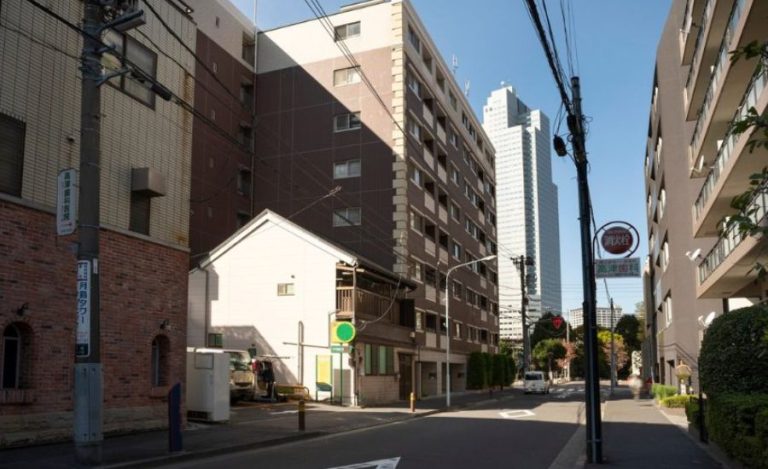Vavilaku In Tulu, History, Imagery, Festivals & More
Introduction to Vavilaku
Vavilaku in Tulu is more than fair a light; it symbolizes light, trust, and great fortune in the Tulu community. Starting from the southwestern portion of India, especially in Karnataka, the Tulu culture is wealthy with conventions, celebrations, and ceremonies that celebrate life and most profound sense of being. The vavilaku, made of clay, holds a uncommon put amid celebrations and ceremonies, casting its warm shine on noteworthy minutes in people’s lives.
In the Tulu dialect, “vavilaku” deciphers to “lamp” or “light.” This light is not only a useful protest; it speaks to a association to the divine and the community’s values. The flashing fire serves as a update of the light of information, virtue, and the triumph of great over fiendish. Through this article, we will investigate the centrality of vavilaku in Tulu, diving into its history, social significance, and the different ways it is utilized in Tulu conventions and ceremonies. We will too address common questions approximately vavilaku to give a more profound understanding of this lovely social artifact.
The History and Root of Vavilaku in Tulu Culture

Vavilaku has profound roots in Tulu culture, following back to antiquated conventions. It is accepted that this custom risen as a way to honor gods and welcome success into homes amid festivals.
Crafted from clay or brass, the vavilaku holds oil and wicks. This basic however significant plan reflects the resourcefulness of our precursors vavilaku in tulu who caught on the importance of light in scattering darkness.
In prior times, families would assemble around the vavilaku amid promising events. The flashing blazes symbolized trust, delight, and community bonding.
Over eras, its utilize advanced but held its center essence—celebrating life’s significant minutes with warmth and brightness.
The vavilaku not as it were enlightens spaces but moreover serves as a social marker inside Tulu family units. Its nearness means coherence of conventions passed down through eras whereas strengthening community ties.
The Imagery of Light in Tulu Festivals
Light holds a significant meaning in Tulu celebrations, symbolizing virtue, information, and delight. It is regularly seen as a directing drive that disperses obscurity and numbness. This light gets to be particularly critical amid celebrations vavilaku in tulu where communities come together to honor divinities or check regular changes.
During these events, the gleam of oil lights makes an charming vibe. Each flashing fire speaks to trust and recharging. Families light Vavilaku not fair for beautification but as an welcome for favors into their homes.
The dynamic play of lights too cultivates solidarity among individuals. As families assemble to share dinners beneath the delicate shine of lights, the air changes into one of warmth and association. The act of lighting lights serves as a update that indeed in challenging times, there is continuously light at the conclusion of the tunnel—a effective message imbued profoundly inside Tulu culture’s happy traditions.
Types of Vavilaku utilized in Diverse Festivals
Vavilaku, an fundamental component in Tulu celebrations, comes in different shapes. Each sort reflects the special soul of the celebration it accompanies.
During Deepavali, conventional earthen lights filled with oil serve as Vavilaku. Their flashing blazes symbolize triumph over obscurity. Families accumulate to light these lights and share minutes of joy.
For Kola celebration, a extraordinary kind of Vavilaku is created from coconut shells. These are embellished with dynamic colors and flower beautifications. The shinning brightening upgrades the happy climate whereas honoring hereditary spirits.
In a few ceremonies, enhancing brass lights called “Akkadi” take center arrange. Their complex plans not as it were include magnificence but too imply thriving and abundance.
Each variety of Vavilaku plays a essential part in improving the social embroidered artwork of Tulu celebrations, making them paramount events for communities over generations.
Rituals and Conventions encompassing Vavilaku
Rituals and conventions encompassing vavilaku are profoundly established in Tulu culture. These hones regularly start with fastidious arrangement. Families assemble materials, counting clay and oil, to make their possess vavilakus.
On celebration days, the lighting of the vavilaku holds awesome centrality. It is not fair approximately light; it symbolizes thriving and trust for the future. As nightfall slips, families come together to light their manifestations in a vavilaku in tulu shared minute of joy.
Prayers go with this custom, conjuring favors from divinities. The flashing flares speak to dispersing darkness—both actually and metaphorically.
In a few families, ladies play a central part in these ceremonies as they offer conventional desserts nearby lit vavilakus. This act reinforces family bonds whereas honoring genealogical customs.
The cadenced chants resounding through homes make an environment filled with most profound sense of being and warmth amid these celebrations.
Modern Adjustments of Vavilaku in Tulu Celebrations

Modern adjustments of vavilaku in Tulu celebrations reflect the advancing nature of social hones. Whereas conventional clay lights are still cherished, numerous families select for eco-friendly adaptations made from reused materials or Driven lights.
These advancements cater to modern concerns almost maintainability whereas keeping up the substance of light as a noteworthy image. A few communities indeed join aesthetic plans, exhibiting neighborhood vavilaku in tulu craftsmanship and creativity.
Social media moreover dramatizations a part in this advancement. Celebrations are regularly shared online, rousing more youthful eras to lock in with their legacy through interesting translations of vavilaku lighting ceremonies.
Festivals presently highlight competitions that energize members to make the most outwardly engaging shows utilizing both conventional and present day components. This mix keeps the soul lively whereas permitting room for individual expression in each celebration.
Origin and Significance
The convention of lighting vavilaku is profoundly entwined with Tulu Nadu’s history and most profound sense of being. Tulu Nadu, a locale in the coastal zones of Karnataka, has a wealthy legacy filled with assorted traditions and convictions. Oil lights like the vavilaku have been utilized since antiquated times in sanctuaries, families, and community celebrations. The flashing fire speaks to life, progression, and the nearness of the divine in regular life.
In Tulu culture, lighting the vavilaku is frequently the to begin with step in any sacrosanct ceremony. It is accepted that by lighting the light, one welcomes favorable energies into the space, guaranteeing a favorable result for the occasion. Whether amid weddings, celebrations, or housewarming, the vavilaku plays a central role.
Symbolism of Vavilaku
The vavilaku is more than fair a source of light; it carries profound imagery in Tulu convictions. The oil or ghee utilized to fuel the vavilaku in tulu light speaks to give up and exertion, whereas the fire means illumination, intelligence, and otherworldly information. The act of lighting the light is seen as a otherworldly advertising to gods, looking for their favors and guidance.
In family units, a vavilaku is lit each morning and evening as portion of the day by day adore schedule. This hone implies the family’s commitment to their gods and the coherence of their conventions. It too symbolizes trust and the conviction that light will continuously overcome obscurity, bringing inspiration and peace to the family.
Role in Celebrations and Rituals
The vavilaku plays a central part in Tulu celebrations, most eminently amid Deepavali, the celebration of lights. Amid this time, homes are embellished with columns of oil lights, symbolizing the triumph of light over obscurity, great over fiendish. It is a time when families come together to supplicate, celebrate, and offer much appreciated for the endowments they have received.
Apart from Deepavali, the vavilaku is too utilized amid devout celebrations such as Naga Panchami, where serpentine gods are adored, and Kola or Bhoota Kola, a formal move to soul revere. In these ceremonies, the lighting of the light is accepted to conjure the nearness of the divinity or soul, favoring the event and ensuring the community.
The Otherworldly Connection
In Tulu family units, lighting the vavilaku is frequently went with by supplications and chanting of mantras. This hone reinforces the otherworldly association between the person and the divine. The fire of the light is thought to carry one’s supplications to the gods, lighting up their way to look for endowments and guidance.
Many accept that the vavilaku is not fair a device for revere but a living substance that carries the vitality of the family. In a few conventions, the vavilaku is treated as a part of the family, with awesome care taken to guarantee it is kept clean and lit regularly.
Artistic and Social Impact
The creative plan of vavilaku has advanced over centuries, reflecting the wealthy craftsmanship of Tulu Nadu. The lights are regularly made of brass or bronze and complicatedly planned with themes speaking to nature, gods, or creatures. These lights are not fair but too hold tasteful esteem, frequently passed down as legacies inside families.
The nearness of vavilaku is too seen in Tulu writing, society stories, and craftsmanship. In conventional Yakshagana performances—a frame of society theater—the lighting of lights symbolizes the starting of the narrating, where the divine enters the execution space. The light speaks to the interminable fire of information that the entertainers share with the gathering of people through their tales.
Modern Relevance
In today’s fast-paced world, the hone of lighting vavilaku proceeds to hold significance in Tulu Nadu. In spite of cutting edge headways and the comfort of electric lights, the act of lighting an oil light holds its otherworldly and social noteworthiness. Numerous Tulu individuals living exterior their country proceed this convention, as it serves as a connect to their social roots and an expression of their faith.
The vavilaku’s part in ceremonies and celebrations guarantees that the more youthful era remains associated to their legacy, learning the values of commitment, give up, and the significance of a otherworldly association in their lives.
Rituals and Hones Related with Vavilaku
Lighting the light is not simply a ceremonial act but a hone filled with meaning and veneration. Here are a few common customs and hones related with Vavilaku:
1. Arrangement of the Vavilaku
The planning of Vavilaku includes selecting a appropriate light, frequently made of brass or clay. Customarily, a light is filled with oil. As a rule coconut or sesame oil.
2. Lighting the Vavilaku
The lighting of the Vavilaku regularly happens in the evening, stamping the starting of a supplication session or celebration. The individual lighting the light ordinarily recounts a supplication or mantra, conjuring favors from deities.
Symbolizing the dispersing of obliviousness and the brightening of the mind.
3. Situation of the Vavilaku
Vavilaku is deliberately at different areas. Such as the entrance of the house. On the puja sacrificial table, and in the yard. Its situation is typical, inviting visitors and divinities alike. The shine of the light is accepted to make a positive atmosphere. Welcoming success and bliss into the home.
4. Community Participation
Vavilaku too cultivates a sense of community among the individuals of Tulu Nadu. Amid celebrations, families regularly come together to light lights in a collective celebration. This communal viewpoint strengthens social bonds and empowers interest in social hones, making a dynamic air of togetherness.
Vavilaku in Advanced Times
As society advances, the of Vavilaku proceeds to adjust whereas holding its social pith. In modern Tulu Nadu. Vavilaku is not restricted to conventional customs. But has moreover found its put in present day celebrations.
1. Social Festivals
In later a long time, social celebrations celebrating Tulu legacy have picked up ubiquity. These occasions frequently include conventional music, move, and exhibitions that highlight the centrality of Vavilaku in Tulu culture. The lighting of lights amid these celebrations serves as a update of the significance of protecting and advancing social identity.
2. Social Media Influence

With the rise of social media, the hone of Vavilaku has found modern expressions. Families share photographs and recordings of their Vavilaku celebrations, exhibiting the excellence of the lights and the bliss of the merriments. This computerized stage makes a difference to keep the convention lively, motivating more youthful eras to grasp their social heritage.
3. Economical Practices
In present day times, there is too a developing accentuation on supportability in the celebration of Vavilaku. Numerous families are presently selecting for eco-friendly lights made from characteristic materials and utilizing natural oils for lighting. This move reflects a broader mindfulness of natural issues and a commitment to protecting conventions in a mindful manner.
Educational and Conservation Efforts
Recognizing the social importance of vavilaku, a few community pioneers and social organizations inside the Tulu-speaking locales have started endeavors to teach the more youthful era almost this convention. Workshops, social occasions, and presentations are regularly organized to exhibit the sorts of vavilaku and their importance in Tulu culture.
Facts:
- Historical Roots: The vavilaku, an oil lamp, has its origins in ancient Tulu Nadu traditions, symbolizing life, continuity, and the divine.
- Craftsmanship: Traditional vavilakus are made from clay or brass, showcasing intricate designs that often reflect nature and spirituality.
- Symbolism: The oil represents effort and sacrifice, while the flame symbolizes wisdom, knowledge, and spiritual enlightenment.
- Ritual Significance: Lighting the vavilaku marks the beginning of religious ceremonies, festivals, and family prayers.
- Types of Vavilaku: They vary by occasion, such as earthen lamps for Deepavali, decorative brass lamps for rituals, and coconut-shell lamps for Kola festivals.
- Cultural Adaptations: Modern vavilakus use eco-friendly materials and incorporate LED lights while retaining their traditional significance.
- Spiritual Connection: Lighting the vavilaku is seen as an act that invokes divine blessings and wards off negativity.
- Artistic Heritage: The vavilaku’s design and symbolism have inspired Tulu art forms like Yakshagana and folk tales.
- Modern Relevance: Social media and cultural festivals have brought vavilaku traditions into contemporary settings, inspiring younger generations.
- Educational Initiatives: Workshops and exhibitions in Tulu Nadu aim to preserve and promote the cultural significance of vavilaku.
Summary:
Introduction: Vavilaku, meaning “lamp” in Tulu, is a cultural symbol of light, hope, and spirituality in Tulu Nadu, a region in Karnataka, India. It represents the triumph of good over evil and holds a sacred role in rituals and festivals.
Historical Roots: Vavilaku originated as an essential element in worship and celebrations, crafted from clay or brass, and used to honor deities and foster community bonding.
Symbolism: Beyond functionality, vavilaku symbolizes knowledge, virtue, and spiritual connection. Its flame is considered a medium for prayers and divine blessings.
Role in Festivals: The vavilaku is central to Tulu celebrations like Deepavali, Naga Panchami, and Bhoota Kola. It lights up homes and ceremonies, symbolizing prosperity and unity.
Rituals and Practices: Families prepare vavilaku carefully, positioning it in auspicious locations and lighting it during prayers. This practice strengthens spiritual and familial bonds.
Modern Adaptations: Eco-friendly materials and LED lights are modern innovations. Social media and cultural festivals have also rejuvenated interest in vavilaku traditions among youth.
Artistic and Social Impact: Intricate designs of vavilaku showcase Tulu Nadu’s craftsmanship. It is a motif in Tulu literature, Yakshagana performances, and community festivals.
Educational Efforts: Community leaders organize workshops and exhibitions to teach younger generations about vavilaku’s importance, ensuring its cultural preservation.
FAQs:
- What does “vavilaku” mean in Tulu?
Vavilaku translates to “lamp” or “light” and symbolizes hope, knowledge, and spiritual connection in Tulu culture. - What materials are used to make vavilaku?
Traditional vavilaku is crafted from clay or brass, but modern versions also use eco-friendly and recycled materials. - Why is lighting the vavilaku significant?
Lighting the vavilaku symbolizes dispelling darkness, seeking divine blessings, and fostering spiritual and familial bonds. - What festivals prominently feature vavilaku?
Deepavali, Naga Panchami, and Bhoota Kola are key festivals where vavilaku plays a central role. - How has vavilaku evolved in modern times?
Eco-friendly designs, LED lights, and digital sharing on social media have adapted the tradition to contemporary lifestyles. - What is the spiritual significance of vavilaku?
The oil and flame of vavilaku represent effort, sacrifice, and enlightenment, connecting worshippers to the divine. - How is vavilaku positioned in rituals?
Vavilaku is placed in auspicious spots like entrances, altars, or courtyards to invite positive energy and prosperity. - What is the artistic impact of vavilaku?
Vavilaku designs reflect Tulu Nadu’s rich craftsmanship and appear in traditional art forms like Yakshagana. - Are there educational initiatives to preserve vavilaku traditions?
Yes, workshops and cultural festivals teach younger generations about vavilaku’s historical and spiritual importance. - What modern practices involve vavilaku?
Contemporary adaptations include eco-friendly materials, artistic competitions, and online celebrations showcasing its cultural relevance.
For more Information About Blog visit Francher Way





